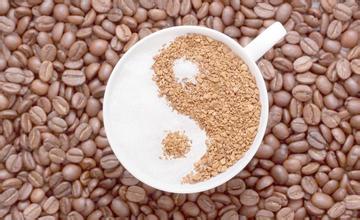The ratio of espresso to milk foam
The ratio of espresso to milk foam
Milk: the fat content of milk used in latte drinks is basically about 3%. The less fat, the harder the foam. What you want is smooth foam (so forget about fat-free cappuccinos).
About foam: the main thing to keep in mind when making foam is to stop when the temperature reaches the right point. The appropriate temperature refers to 55-65 °C, depending on your taste. Foaming for too long will condense the milk and change its taste (and cappuccino will be too hot). Overheated milk can also make the foam too hard. How different will the foam be? Here are some typical examples:
Blistering: if you are distracted or inattentive when you are milking, it is easy to cause the steam pipe to be above the surface of the milk rather than just below it. The result is milk spatter and larger milk bubbles. Of course you can still get a lot of foam in the flower cup, but it will taste bad.
Too hard: the hard foam looks stiff, and it doesn't mix with the coffee when you pour it into the coffee, but accumulates on top of your coffee like fluffy beaten cream. If you play a little longer, it will be layered, 90% of which is flowing milk, and a thick hard foam lid floating on it. When you pour it into the coffee, the milk will flow out of the flower cup first. You must scoop the foam into the coffee cup with a spoon.
Smooth: if you do everything right, when you pour out the foam, the milk looks smooth and creamy, a bit like pouring yogurt. The milk and your espresso will mix perfectly, and the crema will color the surface of the milk to form a typical brown edge of the cappuccino.
Milk that has been beaten again often makes hard foam. The trick is to make the right quantity and quality of milk foam in the flower cup at the right temperature. To foam well, you need to know how fast your machine heats up the amount of milk you want.

Important Notice :
前街咖啡 FrontStreet Coffee has moved to new addredd:
FrontStreet Coffee Address: 315,Donghua East Road,GuangZhou
Tel:020 38364473
- Prev

Introduction to Italian concentrated espresso caffeine content tasting
Introduction to Italian espresso espresso caffeine content tasting Macchiato because there is a light milk bubble on it, do not stir it with a coffee spoon, even if you want to add sugar, it is best to sprinkle it evenly on the surface of the foam, find an angle to drink it directly, and keep the coffee layered in your mouth. Suggested collocation: 1. Dark chocolate, it's a perfect match for kung fu coffee.
- Next

Detailed graphic introduction of troubleshooting and maintenance steps of Italian coffee pot after dry burning
Detailed illustration of the troubleshooting and maintenance steps of the Italian coffee pot after dry burning 1. There is only one kind of electric coffee pot, but it is subdivided into an ordinary coffee maker which is only used to make coffee powder, a two-in-one coffee machine that can grind coffee beans and an Italian steam coffee maker that can make milk bubbles. If you are a 9-to-5 office worker with limited time, then the price is cheap and ordinary.
Related
- Beginners will see the "Coffee pull flower" guide!
- What is the difference between ice blog purified milk and ordinary milk coffee?
- Why is the Philippines the largest producer of crops in Liberia?
- For coffee extraction, should the fine powder be retained?
- How does extracted espresso fill pressed powder? How much strength does it take to press the powder?
- How to make jasmine cold extract coffee? Is the jasmine + latte good?
- Will this little toy really make the coffee taste better? How does Lily Drip affect coffee extraction?
- Will the action of slapping the filter cup also affect coffee extraction?
- What's the difference between powder-to-water ratio and powder-to-liquid ratio?
- What is the Ethiopian local species? What does it have to do with Heirloom native species?

